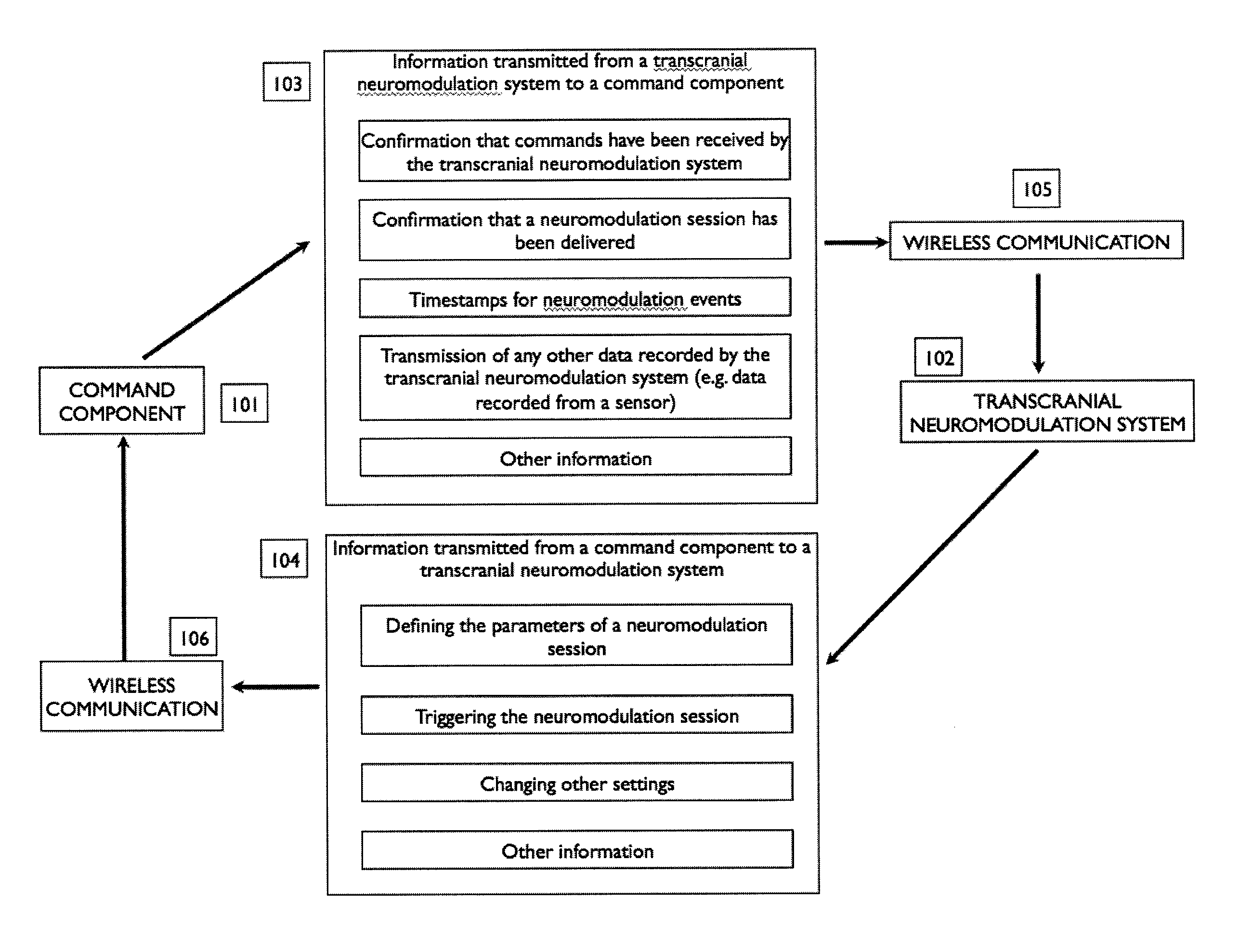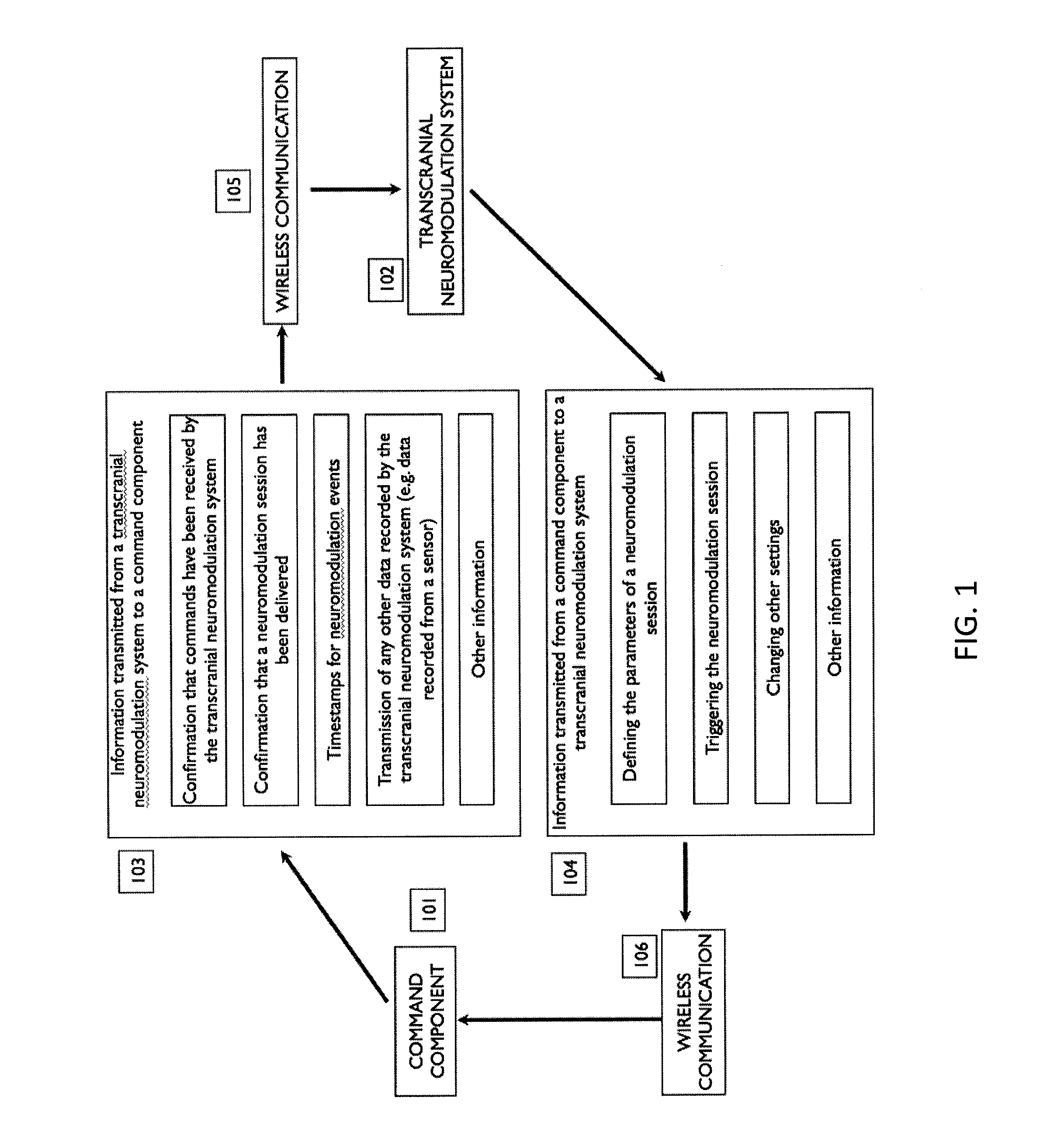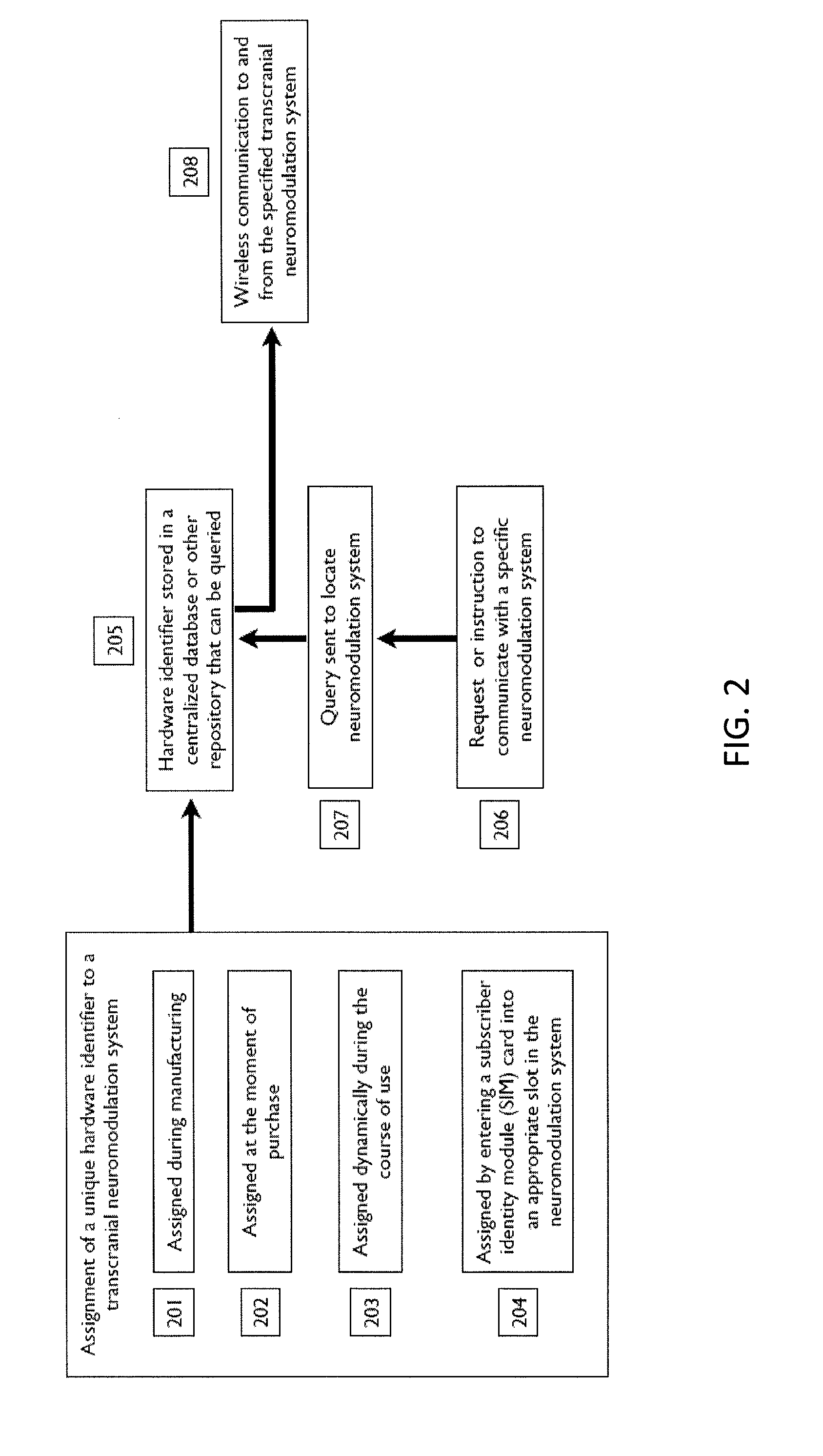Methods and apparatuses for networking neuromodulation of a group of individuals
a neuromodulation and group technology, applied in the field of coordination of transcranial neuromodulation for can solve the problems of inability to safely coordinate neuromodulation of a group of individuals, lack of capability of existing apparatuses, transcranial electric stimulation (tes) or ultrasound neuromodulation apparatuses, etc., to achieve flexible brain region targeting, improve wearability, and facilitate interchangeability
- Summary
- Abstract
- Description
- Claims
- Application Information
AI Technical Summary
Benefits of technology
Problems solved by technology
Method used
Image
Examples
examples
[0157]In an exemplary embodiment, students in a yoga class each wear a TES neuromodulation system configured to induce a state of clam. As they enter the class, each student provides their neuromodulation puck hardware identifier to the instructor (or the hardware identifier is identified automatically by proximity or other means) and indicates their preference for having a state of calm induced during the first or second half of the class. The instructor uses his laptop and specialized software to connect wirelessly to each student's neuromodulation puck according to the hardware address provided by each student, and triggers neuromodulation to begin at the specified portion of the class for each student. By using the unique hardware identifiers for each student, the instructor can specify the timing of an induced state of calm on an individual basis. Optionally, users can provide an access code to the teacher that is only temporarily functional, so that it cannot be reused at a la...
PUM
 Login to View More
Login to View More Abstract
Description
Claims
Application Information
 Login to View More
Login to View More - R&D
- Intellectual Property
- Life Sciences
- Materials
- Tech Scout
- Unparalleled Data Quality
- Higher Quality Content
- 60% Fewer Hallucinations
Browse by: Latest US Patents, China's latest patents, Technical Efficacy Thesaurus, Application Domain, Technology Topic, Popular Technical Reports.
© 2025 PatSnap. All rights reserved.Legal|Privacy policy|Modern Slavery Act Transparency Statement|Sitemap|About US| Contact US: help@patsnap.com



